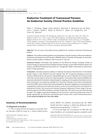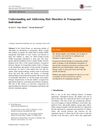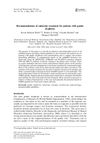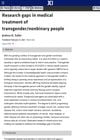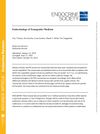Sequential Estrogen-Progestin Addition to Gonadotropin-Releasing Hormone Agonist Suppression for the Chronic Treatment of Ovarian Hyperandrogenism: A Pilot Study
December 1994
in “
The Journal of clinical endocrinology and metabolism/Journal of clinical endocrinology & metabolism
”
gonadotropin-releasing hormone agonist GnRH agonist transdermal estradiol estradiol patches medroxyprogesterone acetate testosterone androstenedione hirsutism hair diameter polycystic ovary syndrome PCOS withdrawal bleeding breakthrough bleeding menopausal symptoms bone mineral content GnRH agonist estradiol patches medroxyprogesterone acetate testosterone androstenedione hirsutism hair diameter PCOS withdrawal bleeding breakthrough bleeding menopausal symptoms bone mineral content
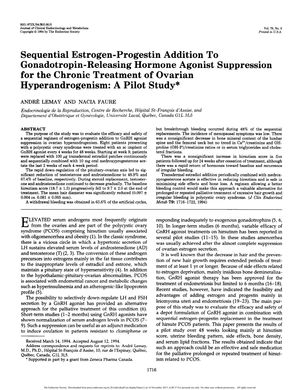
TLDR The treatment effectively reduced hair growth and was safe for patients with PCOS, but it needs better bleeding control.
In a pilot study from 1994, eight patients with polycystic ovary syndrome (PCOS) were treated with a gonadotropin-releasing hormone (GnRH) agonist implant every four weeks for 48 weeks, with the addition of transdermal estradiol patches and oral medroxyprogesterone acetate starting at week 9. This treatment led to significant reductions in testosterone and androstenedione levels, as well as a decrease in hirsutism score from 18.7 to 9.7 and a reduction in mean hair diameter. While 63.6% of the artificial cycles resulted in withdrawal bleeding, 48% experienced breakthrough bleeding. The treatment was associated with a low incidence of menopausal symptoms and a nonsignificant decrease in bone mineral content. After cessation of treatment, there was a nonsignificant increase in hirsutism score, but hormone levels and irregular bleeding returned rapidly to baseline. The study concluded that the regimen was effective in reducing hirsutism and safe in terms of side effects and bone loss, suggesting that with improved bleeding control, this could be a valuable treatment for PCOS-related hair growth and irregular bleeding.
